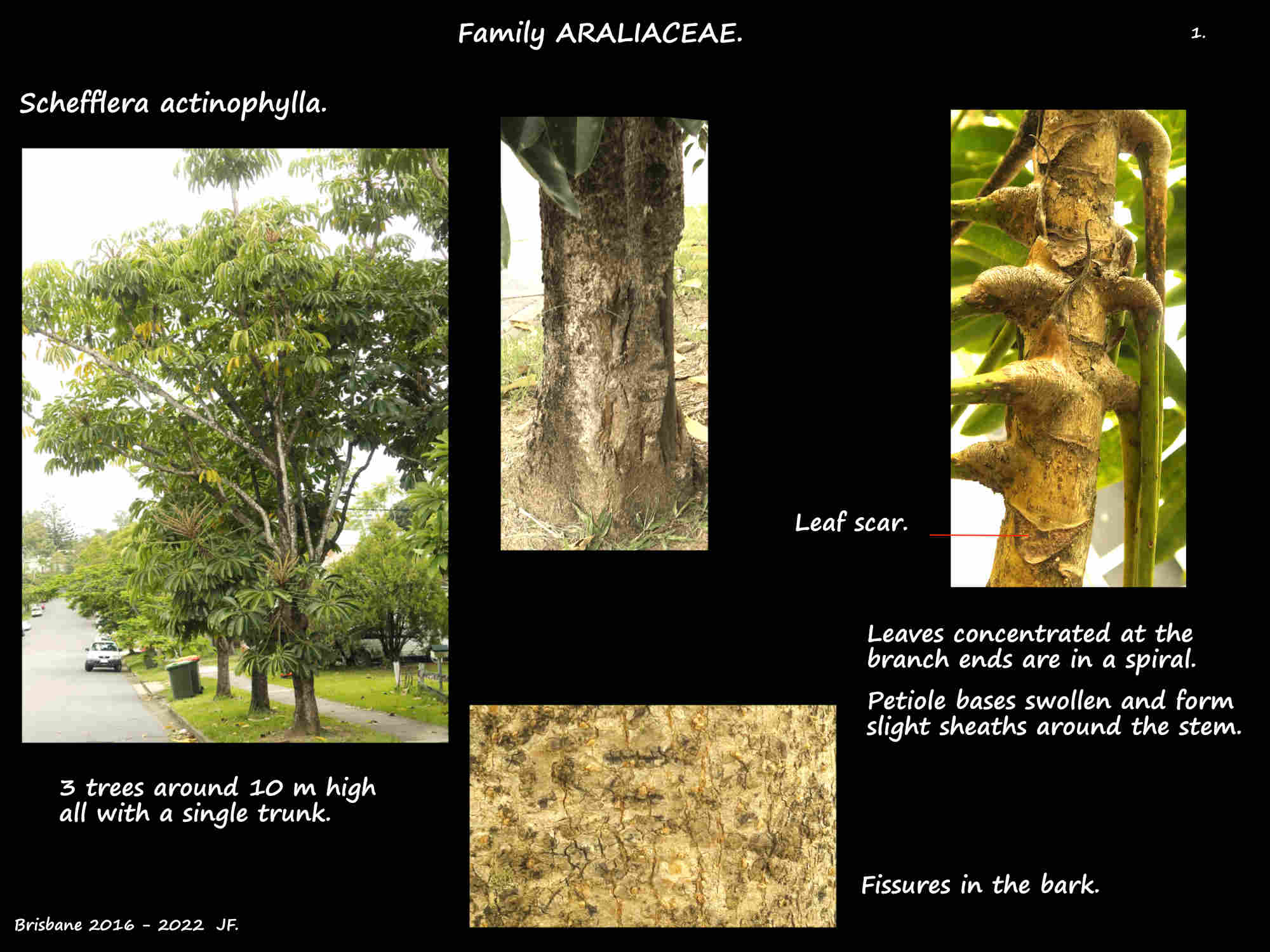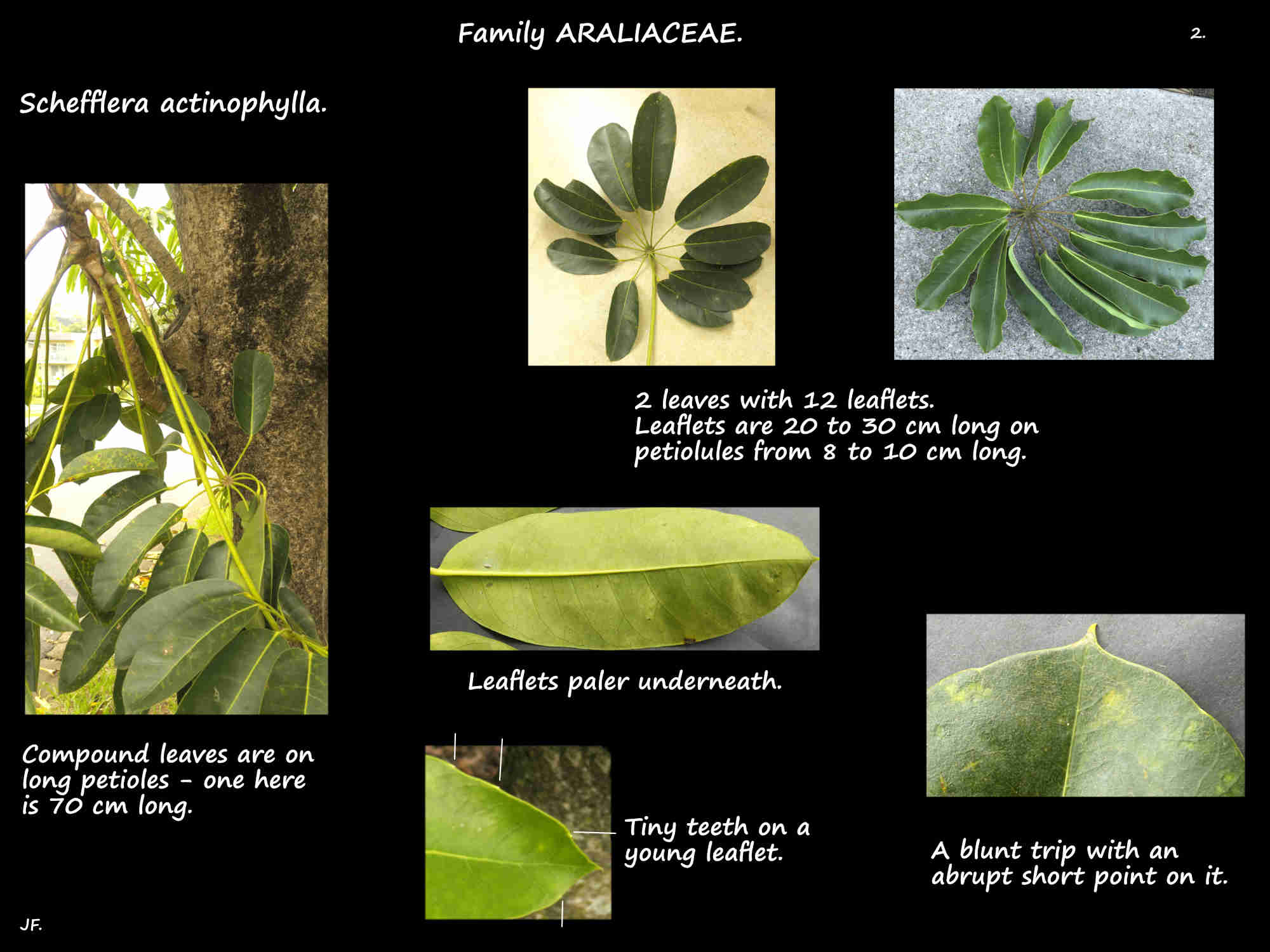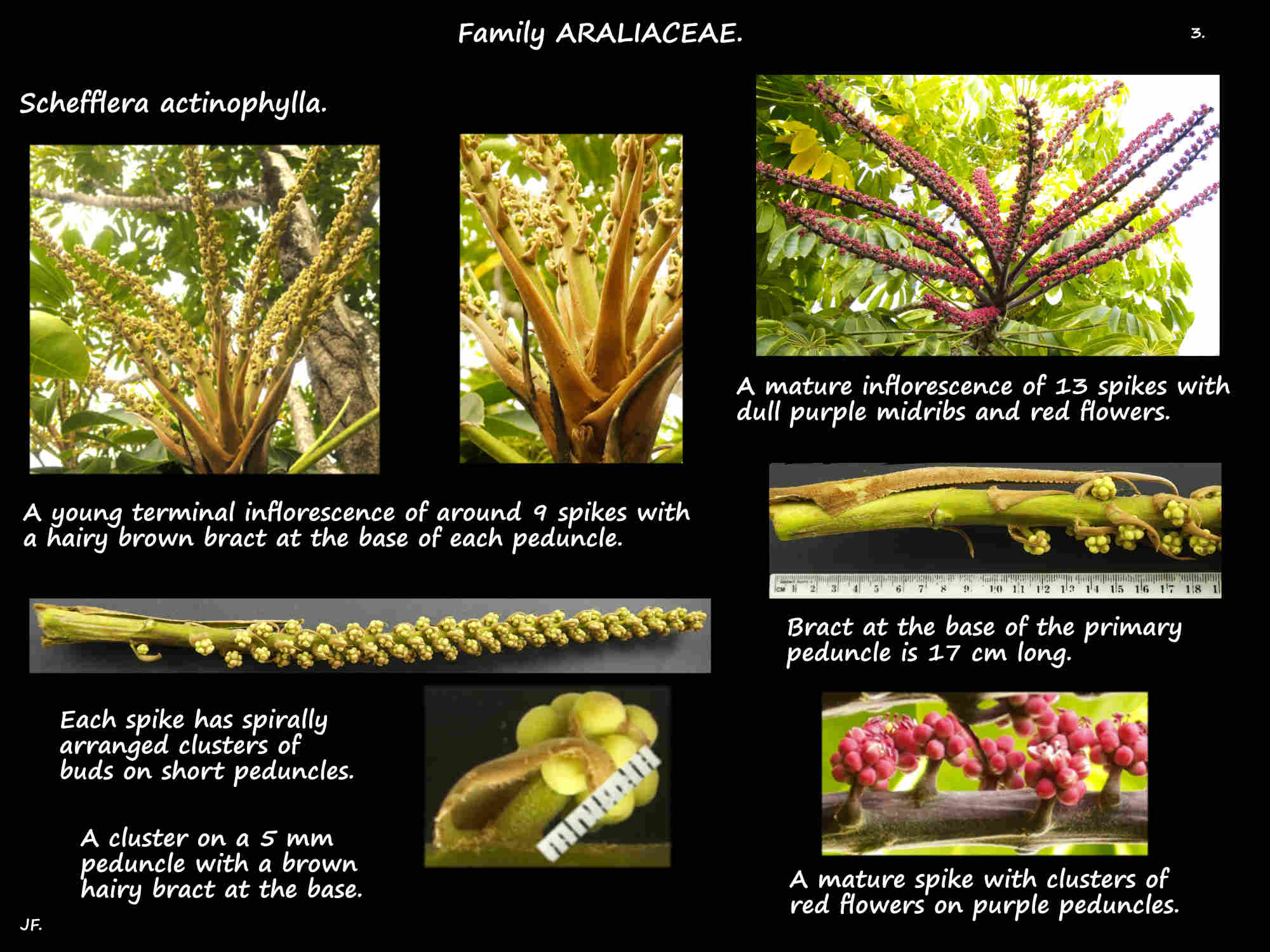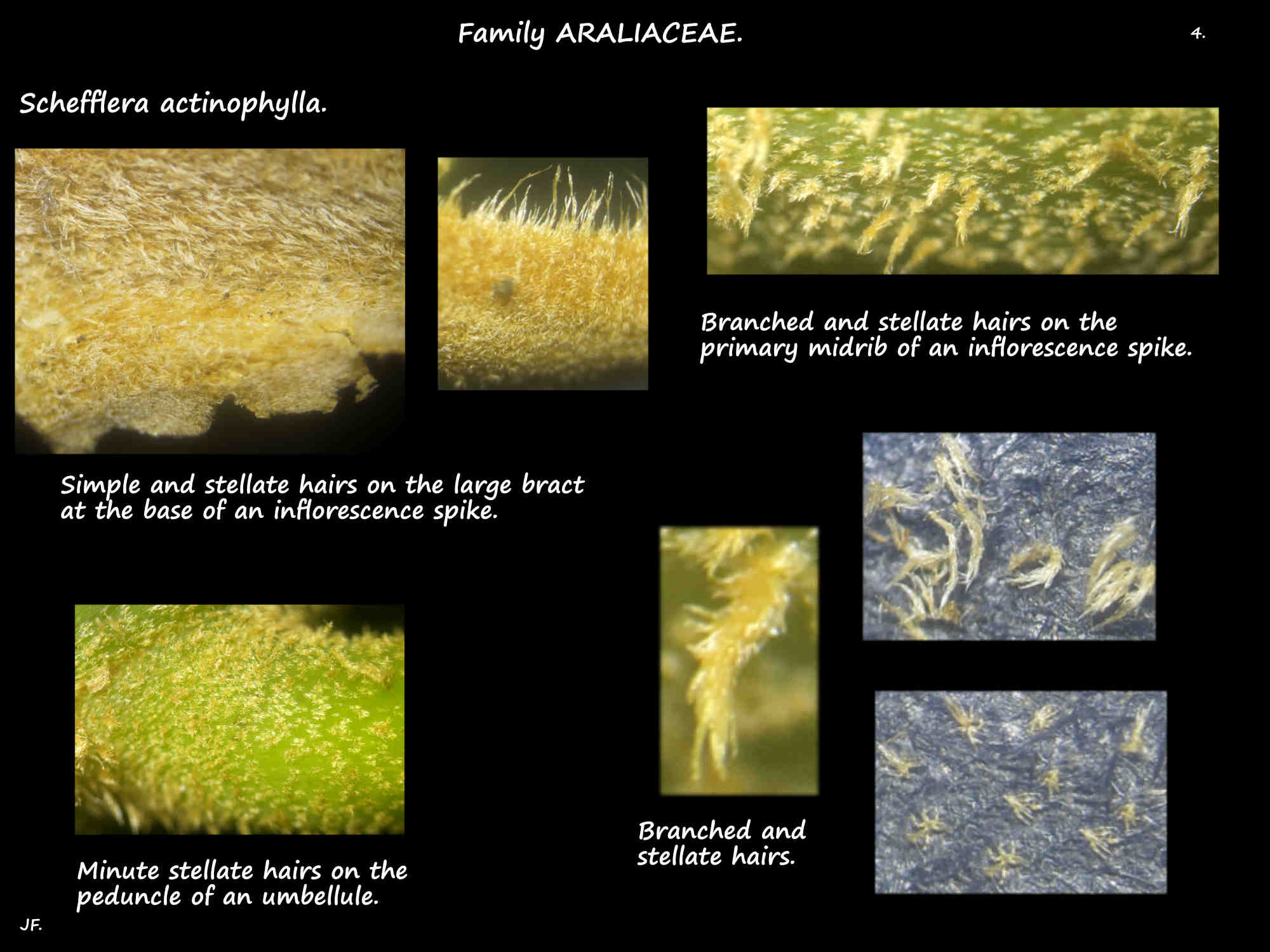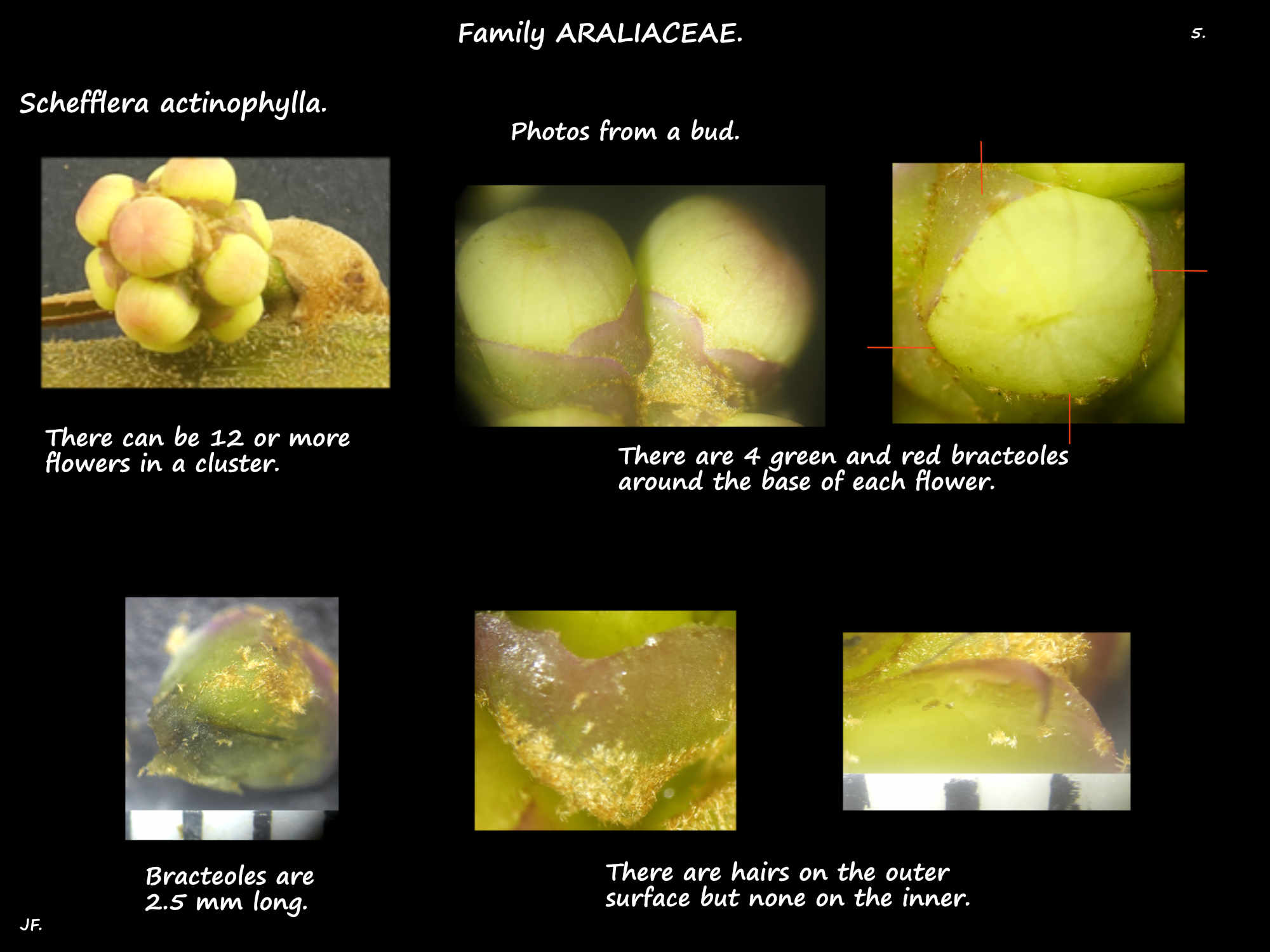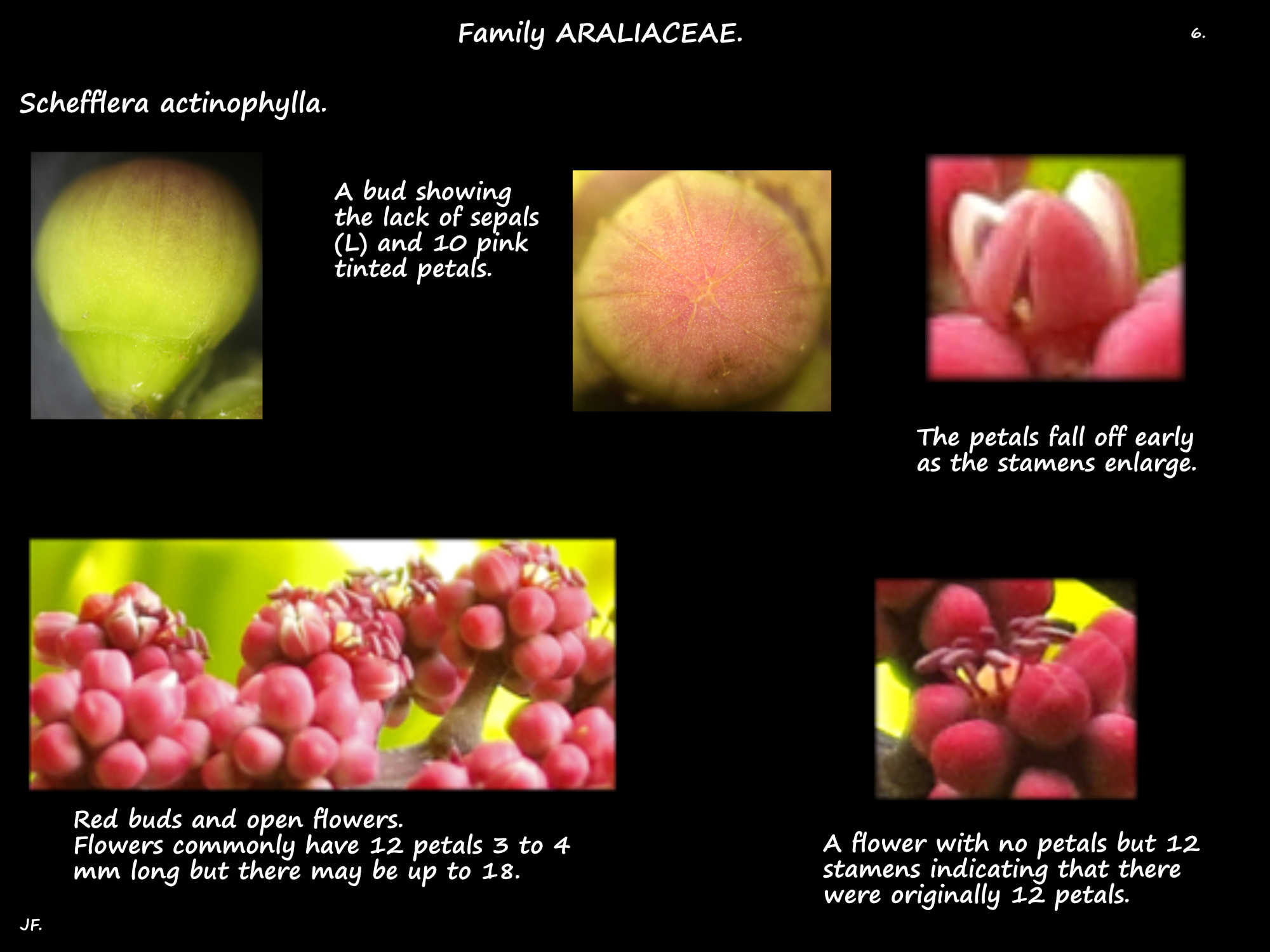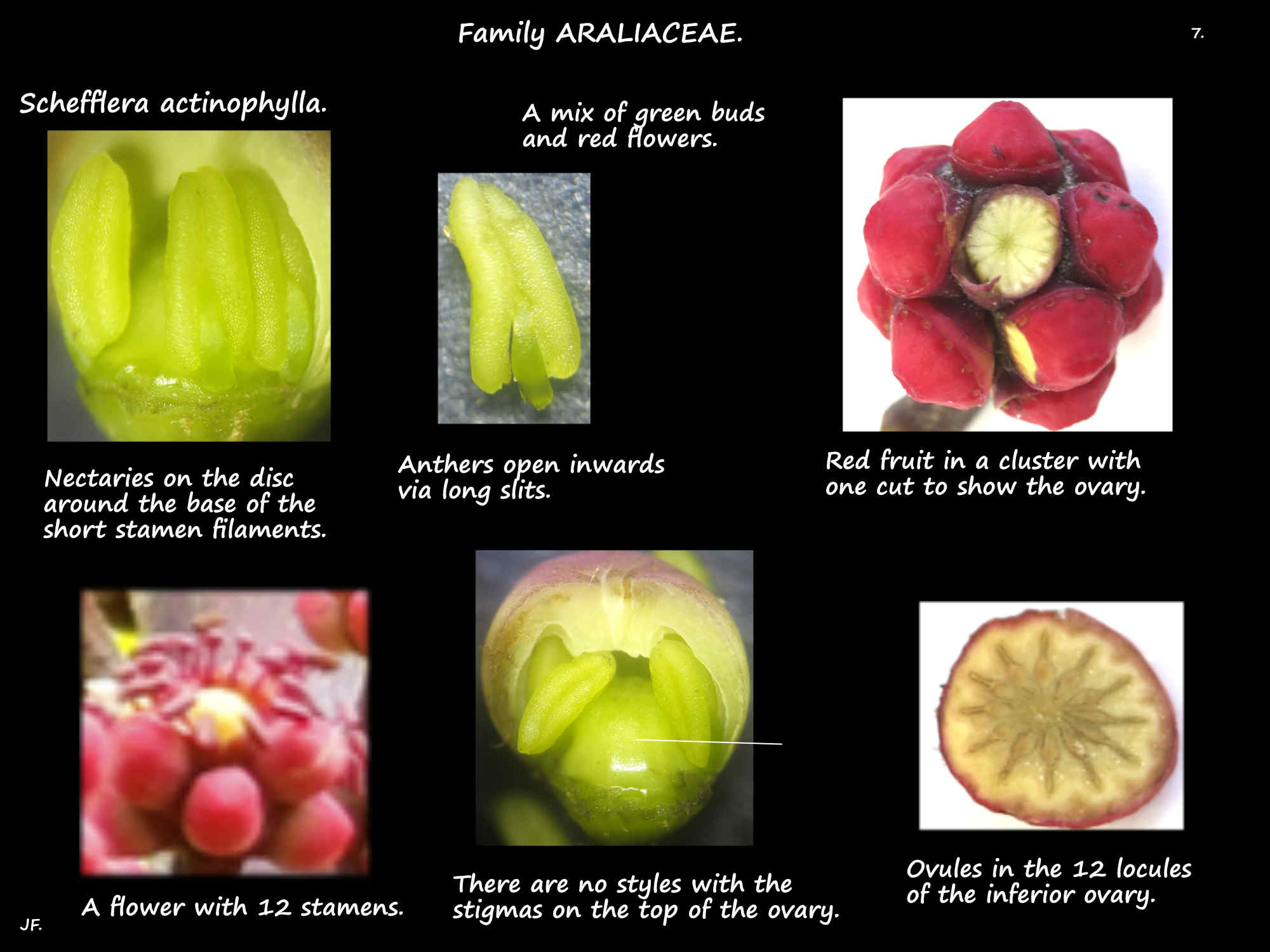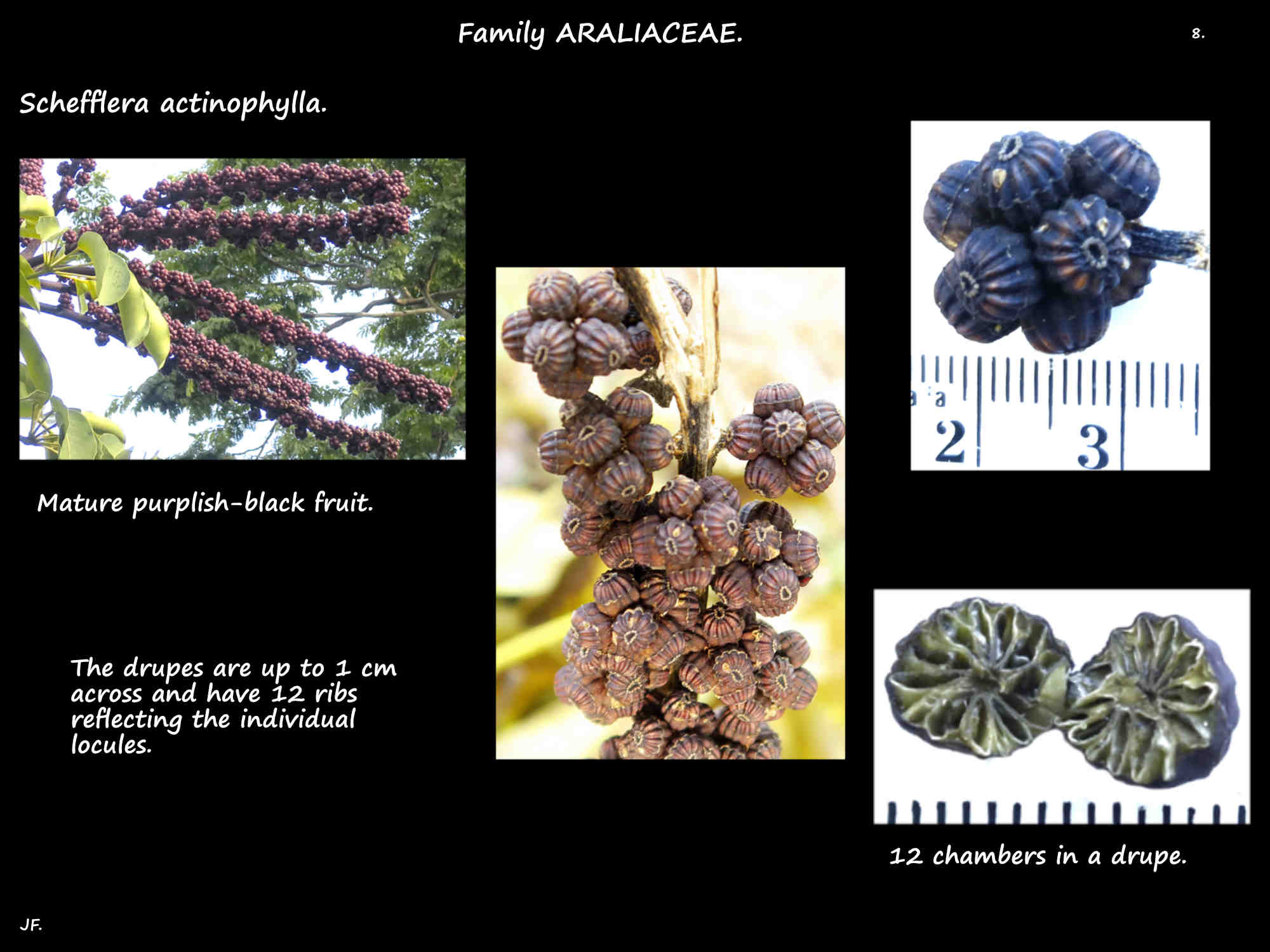Schefflera actinophylla.
The Umbrella tree is native to North Queensland.
It is widely naturalised in south-eastern Queensland where it is an environmental weed.
It is commonly seen in Brisbane gardens.
Seeds caught on the trunk of another tree may germinate and the plant often grows as an epiphyte
until its aerial roots reach the ground.
Up to around 10 m high in cultivation they may be a shrub or tree with a single or multiple trunks.
Young bark is greenish and grey to brown when older.
Young branches have prominent leaf scars and there are no hairs.
There are white lenticels.
The alternate leaves are palmately compound with leaflets all radiating out from the top of the petiole.
Stipules, up to 5 cm long are fused to the petiole.
Leaves are large with petioles up to 70 cm long.
The 12 (to 16) leaflets in each leaf are up to 30 cm long.
The glossy leaflets, on petiolules up to 8 or 10 cm long are oblong, ovate, elliptic or oblanceolate.
The edges of adult leaves are smooth, the tip is pointed and there are no hairs.
Terminal inflorescences are panicles with 10 or more spikes each up to 2 m long.
They are all attached to the stem at the same point.
Each dull purple (when mature) spike has a long hairy bract at the base.
Along each spike are many 1 to 2 cm wide, dense clusters of small flowers.
Each cluster, on a peduncle up to 2.5 cm long has a small hairy bract at the base.
There may be up to 14 flowers, without pedicels in each cluster.
Each flower is surrounded by 4 bracteoles (sometimes referred to as bracts).
(Many sources fail to mention bracteoles but an advanced search turns up many references to them.
Flora of Australia vol. 50 also describes them on S. actinophylla flowers.)
The main inflorescence stalk, bracts, peduncles and bracteoles all have brown hairs.
Sepals are described as being absent or reduced to a flat-topped rim.
There are 12 (up to 18) pink to red petals around 4 mm long that fall off early.
There are as many stamens, on 2.5 mm long filaments as there are petals.
There is a nectiferous disc.
The inferior ovary, of 10 or 12 fused carpels has no style with the stigmas being inserted on the ovary.
The fruit are drupes up to around 1 cm across.
Mature fruit are a deep red to purplish-black and ribbed indicating their origin from a multi-carpelled ovary.
The pale brown, oval seeds are around 7 mm long.
J.F.
